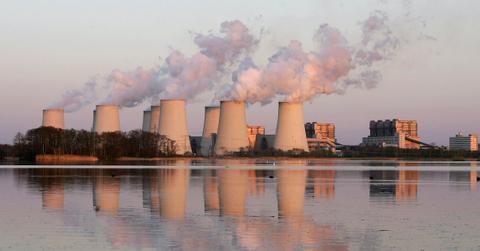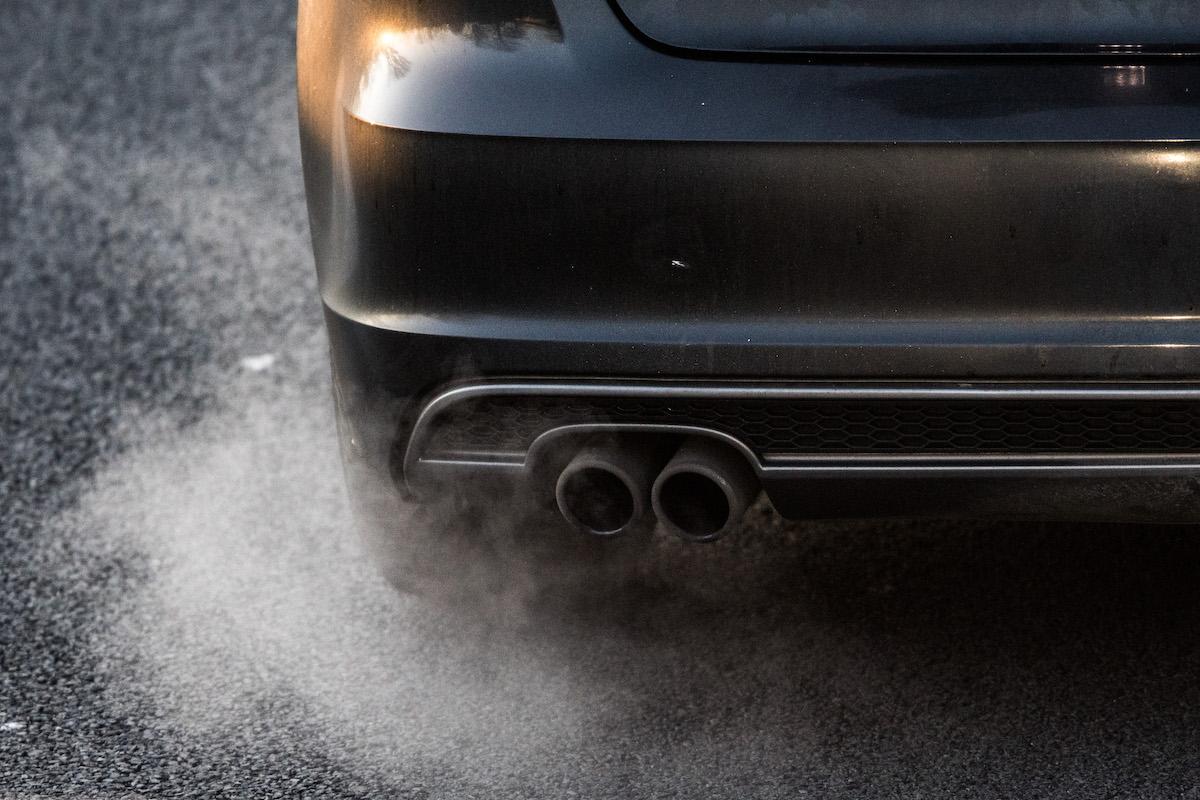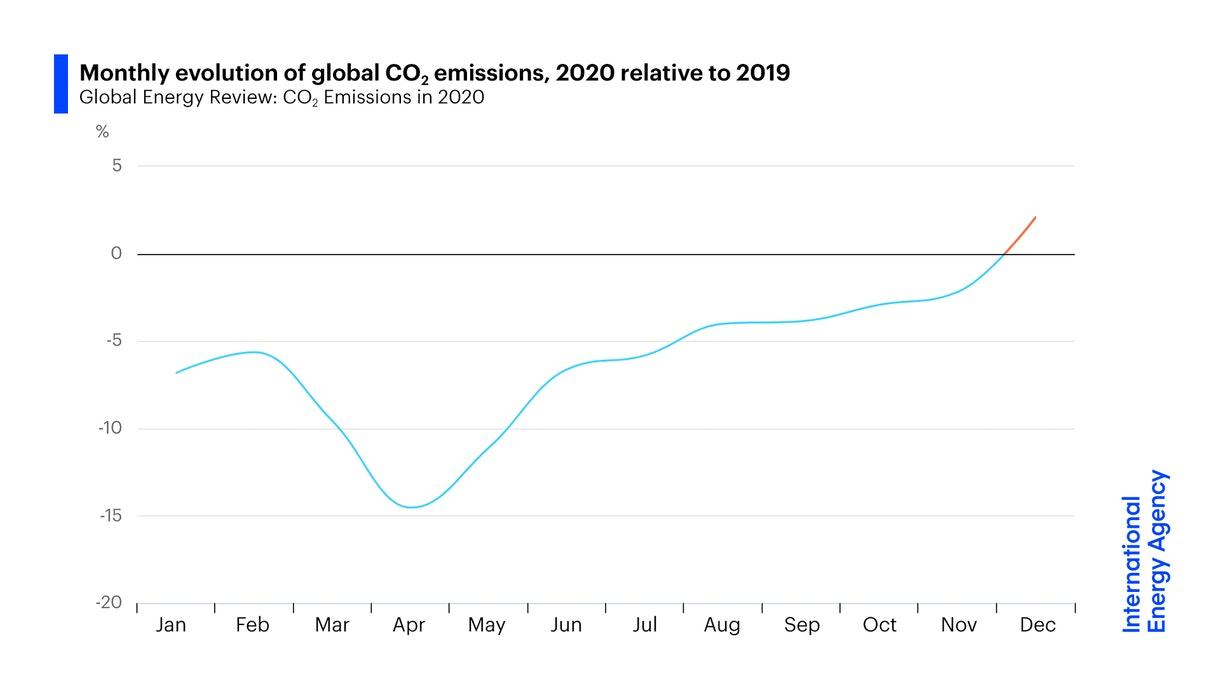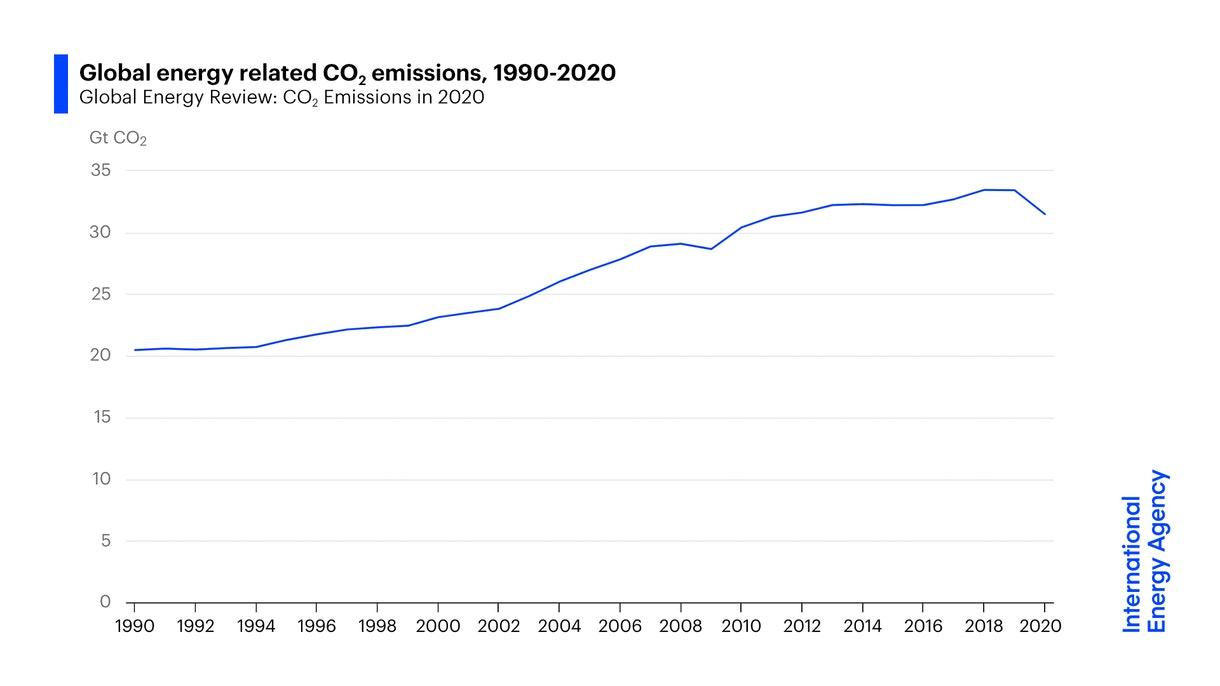Coronavirus Caused Global Emissions to Plummet — Then Sharply Rise
Published March 4 2021, 12:27 p.m. ET

Remember at the beginning of coronavirus lockdowns when CO2 emissions were dropping all over the world? We all thought, "OK, at least there’s one silver lining to this pandemic." Unfortunately, emission dives were only temporary — even though we produced 6 percent less emissions in 2020 than we did in 2019, by the end of 2020, December's global emissions were higher than they were before the pandemic.
The report, which was released on March 2, 2021 by the International Energy Agency (IEA), found that in December 2020, global emissions were 2 percent higher than they were in December 2019. Basically, although emissions dipped in early 2020, by the end of the year, people all over the world made up for lost time and managed to increase emissions by 2 percent — which is higher than it sounds.
But despite that, the pandemic caused the biggest annual dive in worldwide energy-related CO2 emissions since World War II, the IEA says. (Experts actually predicted that this would happen.) That’s not only in thanks to the pandemic, but also to mild winters brought on by global heating and the climate crisis.

According to the IEA, in January 2020, global CO2 emissions were fairly low compared to the year prior, due to mild winters in major Northern Hemisphere economies, which meant less people were using energy for heat. Emissions remained comparatively low over the next few months as more and more people started staying home.
But by April, when countries all over the world were in lockdown, the IEA says global emissions experienced the most significant monthly dip. With less businesses open, less cars on the roads, and less flights in the air, this was no surprise. But by midyear, when lockdowns were lifted, emissions began increasing — and continued to increase through December.

“The rebound in global carbon emissions toward the end of last year is a stark warning that not enough is being done to accelerate clean energy transitions worldwide. If governments don’t move quickly with the right energy policies, this could put at risk the world’s historic opportunity to make 2019 the definitive peak in global emissions,” Dr. Fatih Birol, the IEA’s Executive Director, said in a statement.
“In March 2020, the IEA urged governments to put clean energy at the heart of their economic stimulus plans to ensure a sustainable recovery,” Dr. Birol continued. “But our numbers show we are returning to carbon-intensive business-as-usual. This year is pivotal for international climate action – and it began with high hopes – but these latest numbers are a sharp reminder of the immense challenge we face in rapidly transforming the global energy system.”

A May 2020 paper published by University of Oxford’s Smith School of Enterprise and the Environment (SSEE), concluded that “progress on climate change will depend significantly on policy choices in the coming six months; the right choices could drive a long-term downward trend in GHG emissions.” Well, the six-month mark is long gone; it’s now been 10 months, and emissions have only gotten worse.
Basically, we cannot rely on factors like pandemic-driven reduced economic activity and global warming-driven mild winters to reduce emissions. As Dr. Birol says, governments — particularly from high-emitting countries, such as the U.S. and China — need to prioritize renewable energy, and coronavirus recovery presents us with a great opportunity to do that.
Many experts have discussed the benefits of governments implementing green recovery plans — ones that would center reducing emissions, boosting the economy, and creating new jobs (in renewable energy) alongside COVID-19 recovery. While we wait for governments to take the action that is so desperately needed, there are many things we can do to reduce our emissions on an individual level.